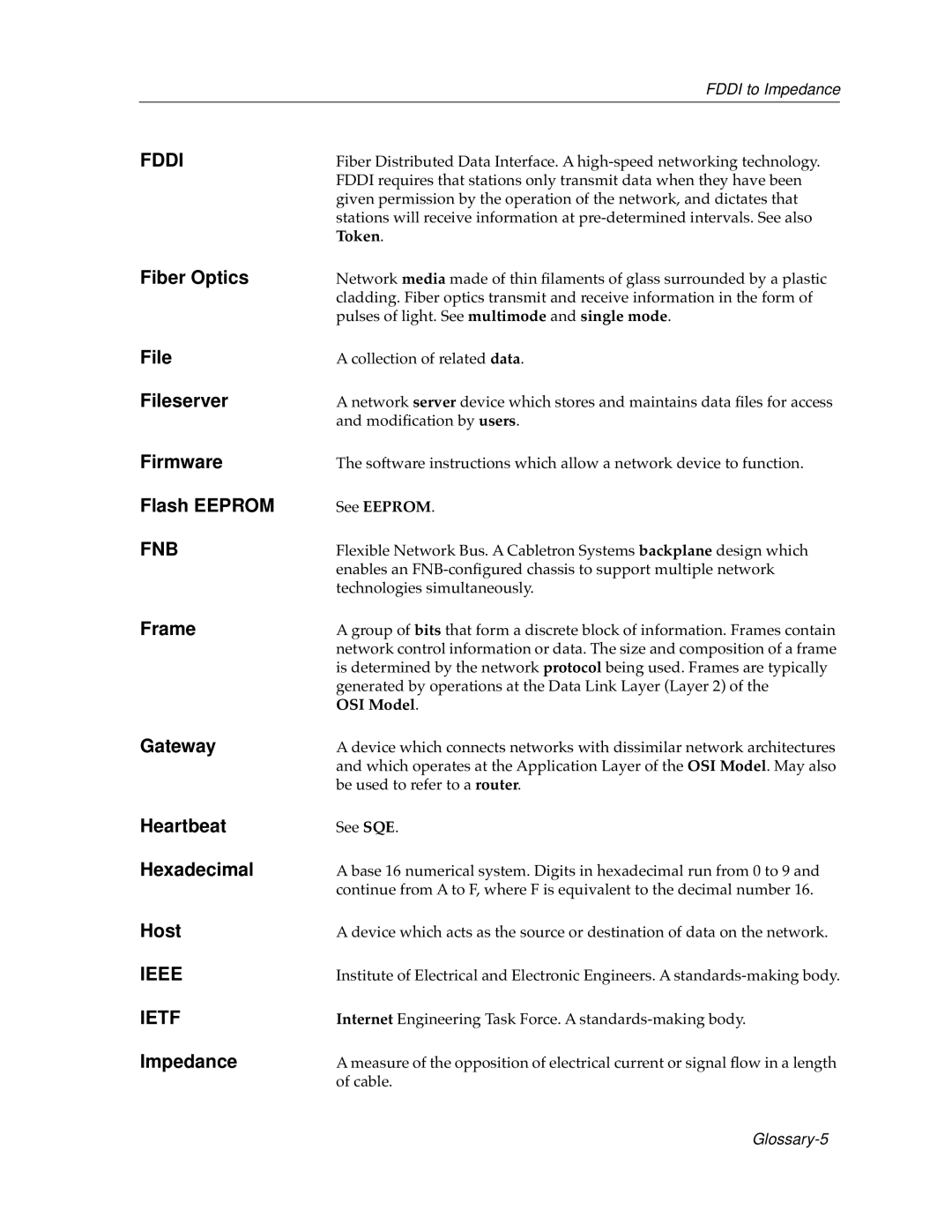FDDI to Impedance
FDDI
Fiber Optics
Fiber Distributed Data Interface. A
Network media made of thin filaments of glass surrounded by a plastic cladding. Fiber optics transmit and receive information in the form of pulses of light. See multimode and single mode.
File | A collection of related data. |
Fileserver | A network server device which stores and maintains data files for access |
| and modification by users. |
Firmware | The software instructions which allow a network device to function. |
Flash EEPROM | See EEPROM. |
FNB | Flexible Network Bus. A Cabletron Systems backplane design which |
| enables an |
| technologies simultaneously. |
Frame | A group of bits that form a discrete block of information. Frames contain |
| network control information or data. The size and composition of a frame |
| is determined by the network protocol being used. Frames are typically |
| generated by operations at the Data Link Layer (Layer 2) of the |
| OSI Model. |
Gateway | A device which connects networks with dissimilar network architectures |
| and which operates at the Application Layer of the OSI Model. May also |
| be used to refer to a router. |
Heartbeat | See SQE. |
Hexadecimal | A base 16 numerical system. Digits in hexadecimal run from 0 to 9 and |
| continue from A to F, where F is equivalent to the decimal number 16. |
Host | A device which acts as the source or destination of data on the network. |
IEEE | Institute of Electrical and Electronic Engineers. A |
IETF | Internet Engineering Task Force. A |
Impedance | A measure of the opposition of electrical current or signal flow in a length |
| of cable. |
